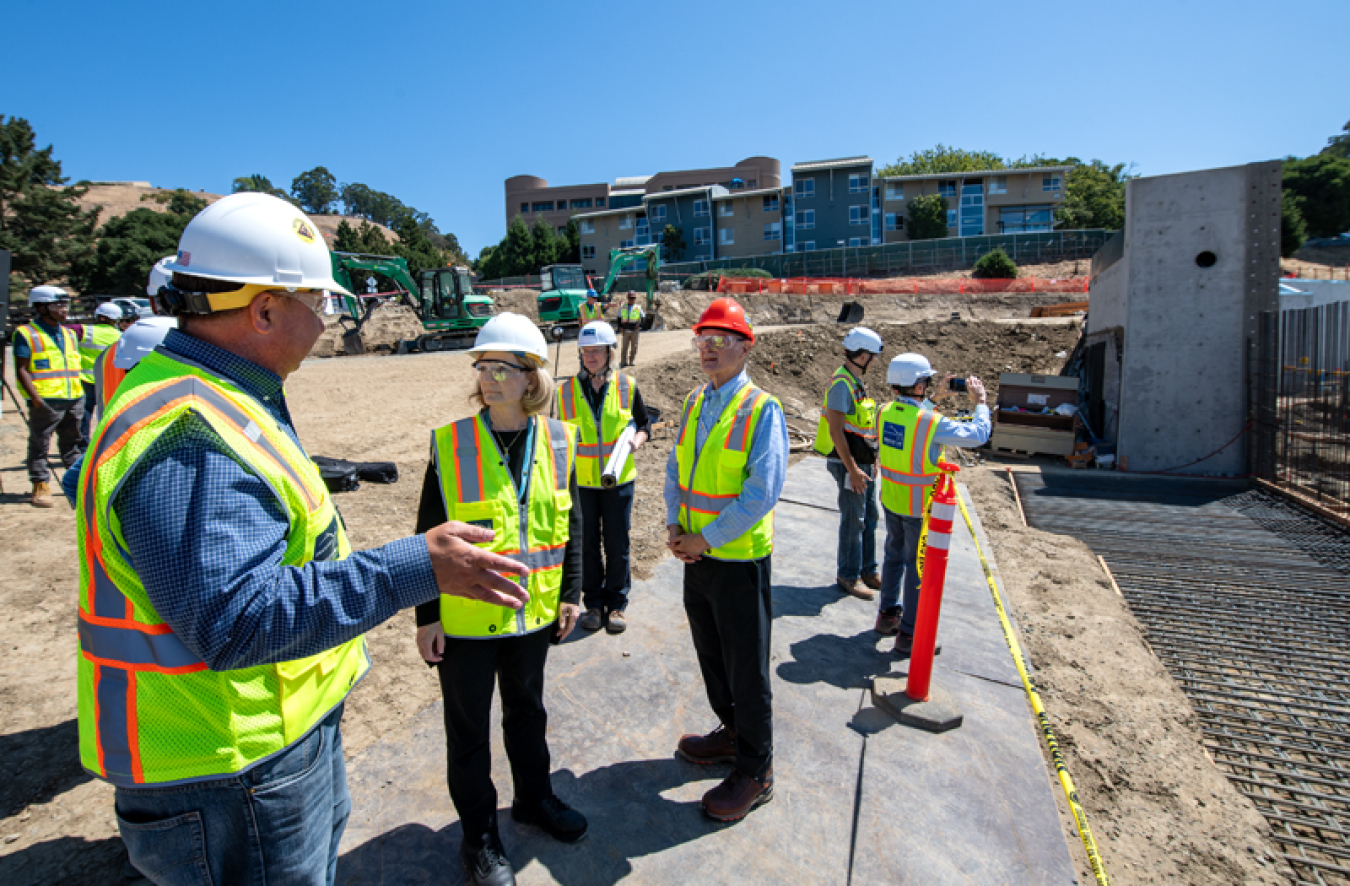Berkeley Lab’s newest building will be the hub of the laboratory’s campus.
August 23, 2024
Leaders from the Department of Energy (DOE) and Lawrence Berkeley National Laboratory celebrated the construction of the foundations for the lab’s newest facility on August 21, 2024. The Seismic Safety and Modernization (SSM) project is replacing the previous cafeteria building, which served the lab for 70 years. (The previous facility could not meet today’s standards for resilience in case of an earthquake, among other issues.) In contrast, the new facility has a 47,000-square-foot state-of-the-art design. It will encompass food service and conference facilities. The building will also be a home for operations services such as security, human resources, and the Health Services Clinic.
This project reflects DOE’s and Congress's commitment to modernizing Berkeley Lab and maintaining U.S. leadership in science and discovery. To meet these needs, the SSM project team designed a new efficient, flexible facility. It will meet California’s safety and seismic standards as well as enhance interactions and collaboration within Berkeley Lab.
The new building includes features that provide seismic resilience, minimize environmental impact, enhance safety and accessibility, and centralize essential core activities. It will also serve as a safe location for “shelter-in-place” emergencies.
The facility is designed to achieve a Leadership in Energy and Environmental Design [LEED™] Gold certification. It will optimize energy and water conservation with a modern, all-electric kitchen and mechanical systems designed to reduce energy consumption. In addition, plumbing and low-flow fixtures will reduce domestic water use up to 40 percent. The design also took prevailing sun and wind patterns into account and minimized excavation and site modification to reduce waste.
Environmental sensitivity extends outside the facility as well. Where practicable, portions of the site’s stormwater will be directed into lined planters and landscaping to improve stormwater quality and flow rates. Plants and soil will provide biofiltration before the water enters the existing stormwater system. Landscaping will include native, drought-tolerant, and fire-resistant plant varieties.
When the new facility opens, it will improve the day-to-day experience of employees at and visitors to Berkeley Lab.
Follow SSM’s progress on the project’s live camera or the project website.

